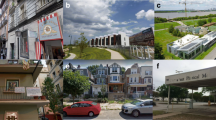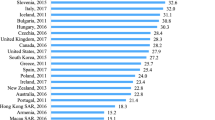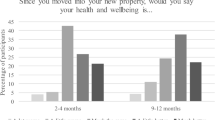Abstract
Israel’s 272,000 Negev/Naqab Bedouins are citizens. Although they were formerly semi-nomads, some 70% of them now live in urban localities as the result of Israel’s policy of urbanization, which was initially state-imposed. However, 30% still live in villages that are not recognized by the state and they lay traditional claim to land there. These villages lack basic infrastructure, such as roads, electricity, and water, and construction is prohibited. Every house built is subject to demolition. The home demolition policy continues to this day, especially with regard to young men who build a home so they can marry and have a family. This qualitative study was conducted among 15 young Bedouin men who live in unrecognized villages and whose homes were demolished in the past three years. The findings show that this policy affects their financial, personal, and familial situation and their attitude toward the state. The findings also reveal how they contend with the policy. The study contributes to the literature on administrative home demolitions, which have been relatively less studied than other forms of Israeli home demolition. The authors recommend prioritizing restoring the young men’s trust in the state and its laws and resolution of the issue of the unrecognized villages and the land ownership claims. They also recommend providing therapy and support for the young men whose experience of home demolitions has been traumatic.
Similar content being viewed by others
Availability of data and materials
The data are available and kept by the first researcher.
References
Abu Rabia-Queder, S. (2013). The construction of inequality among Arab-Bedouin women in the employment market. In The Bedouins in the Negev: A strategic challenge for Israel. S. Daniel Abraham Center for Strategic Dialogue, Netanya Academic College (Hebrew).
Abu-Ras, T. (2011). Bedouin society in the Negev: Changes in the era of urbanization. The Abraham Fund Initiatives. Hebrew.
Abu-Saad, I. (2010). The Arabs of the Negev: Past, present, and future challenges. Ben-Gurion University of the Negev. Hebrew.
Adalah. (2022). https://www.adalah.org/en/content/view/10661#:~:text=The%20law%20authorizes%20the%20Interior,of%20loyalty%22%20to%20the%20state.
Al-Krenawi, A. (2000). Ethnopsychiatry in Bedouin-Arab society in the Negev. Hakibbutz Hameuchad (Hebrew).
Al-Krenawi, A. (2005). Opinion: Psychological effects on children of home demolitions in Bedouin settlements. Commissioned by the Human Rights Association (Hebrew).
Allassad Alhuzail, N. (2017). “My private kingdom and sometimes my private jail”— The meaning of home in the lives of Bedouin women: Changes in the home and social spaces and their implications for Bedouin women. Journal of Gender Studies, 27(6), 1–14. https://doi.org/10.1080/09589236.2017.1301810
Allassad Alhuzail, N. (2021). The social representation of the Bedouin woman. Women’s Studies International Forum, 86, 102474. https://doi.org/10.1016/j.wsif.2021.102474
Allassad Alhuzail, N. (2022). Social workers as leaders rather than as agents of change. British Journal of Social Work, 52(7), 4418–4435. https://doi.org/10.1093/bjsw/bcac044
Allassad Alhuzail, N., & Levinger, M. (2019). Society as a barrier rather than a resource for women. International Journal of Disability, Development and Education, 68(3), 362–375. https://doi.org/10.1080/1034912X.2019.1681378
Allassad Alhuzail, N., & Mahajne, I. (2020). Social work in a conflict context: Challenges facing social workers with indigenous inhabitants of unrecognized villages in Israel. International Journal of Social Welfare, 30(2), 97–105. https://doi.org/10.1111/ijsw.12427
Almi, O. (2006). The ramifications of house demolitions in Israel on the mental health of children. Physicians for Human Rights – Israel. Available at http://www.phr.org.il/uploaded/articlefile_1136475755945.doc.
Anderson, B. (2007). Hope for nanotechnology: Anticipatory knowledge and the governance of affect. Area, 39(2), 156–165.
Avrech, T., & Marcus, M. (2019). The mechanism for dispossession and intimidation: Demolition policy in Arab Bedouin communities in the Negev/Naqab. Negev Coexistence Forum for Civil Equality (2019). Retrieved from https://www.dukium.org/wp-content/uploads/2019/07/Demolition-Report-Eng.2018.pdf (Hebrew).
Basic Law: Israel as the Nation-State of the Jewish People. (2018). Retrieved on July 24, 2022 from: https://main.knesset.gov.il/EN/activity/Documents/BasicLawsPDF/BasicLawNationState.pdf.
Bouquet, B., Massalha, M., Nassar, J., Al-Natsheh, B., & Giacaman, R. (2022). Housing precariousness and health: A mixed-methods study into households affected by displacements and demolitions in East Jerusalem. The Lancet. https://doi.org/10.1016/S0140-6736(22)01170-9
Braun-Lewensohn, O., Sagy, S., & Al Said, H. (2013). Stress reactions and coping strategies among Bedouin Arab adolescents exposed to demolition of houses. Stress and Health, 30(4), 333–342. https://doi.org/10.1002/smi.2519
Central Bureau of Statistics (CBS). (2018). New actions and statistical publications in Israel. Jerusalem, Israel: Central Bureau of Statistics. https://www.cbs.gov.il/he/pages/default.aspx (Hebrew).
Chen-Gal, S., & Siman-Tov, Y. (2009). When the road is long: Therapeutic-educational intervention in relation to the Gaza withdrawal plan. Ministry of Education. Hebrew.
Dushenik, L., & Tsabar Ben Yehoshua, N. (2016). The ethics of qualitative research. In N. Tsabar Ben-Yehoshua (Ed.), Tradition and movements in qualitative research (pp. 217–235). The MOFET Institute. Hebrew.
Eliezer, M. (2017). The connection between education and income in Bedouin society in the Negev. Tiomkin School of Economics, Reichman University. Hebrew.
Falah, G. (1989). Israeli “Judaization” policy in Galilee and its impact on local Arab urbanization. Political Geography Quarterly, 8(3), 229–253. https://doi.org/10.1016/0260-9827(89)90040-2
Gottlieb, N. (2008). “Anna huna” (I am here): Women and the right to health in the unrecognized villages in the Negev. Physicians for Human Rights, pp. 62–71 (Hebrew).
Hatz, S. (2019). Israeli demolition orders and Palestinian preferences for dissent. The Journal of Politics. https://doi.org/10.1086/703211
Hatz, S. (2020). Selective or collective? Palestinian perceptions of targeting in house demolition. Conflict Management and Peace Science, 35(5), 515–535. https://doi.org/10.1177/0738894218795134
Joronen, M., & Griffiths, M. (2019). The affective politics of precarity: Home demolitions in occupied Palestine. Environment and Planning d: Society and Space, 37(3), 561–576. https://doi.org/10.1177/0263775818824341
Josselson, R. (2015). Interviewing for qualitative inquiry: A relativistic approach. The MOFET Institute. Hebrew.
Karayanni, M. (2020). A multicultural entrapment: Religion and state among the Palestinian-Arabs in Israel. Cambridge University Press.
Kedar, A., Amara, A., & Yiftachel, O. (2021). The dead Negev doctrine and the dispossession of the Bedouins. Iyunei Mishpat. Tel Aviv University (Hebrew).
Kotef, H., & Amir, M. (2011). Between imaginary lines: Violence and its justifications at the military checkpoints in occupied Palestine. Theory, Culture & Society, 28(1), 55–80. https://doi.org/10.1177/0263276410380940
Lentin, R. (2016). Israel/Palestine: State of exception and acts of resistance. In S. E. Wilmer & A. Zukauskaite (Eds.), Resisting biopolitics: Philosophical, political and performative strategies (pp. 271–186). Routledge.
Lieblich, A., Tuval-Mashiach, R., & Zilber, T. (2010). Between the whole and its parts and between content and form. In L. Kacen & M. Krumer-Nevo (Eds.), Data analysis in qualitative research. Ben-Gurion University Press. Hebrew.
Mallet, S. (2004). Understanding home: A critical review of the literature. The Sociological Review, 52(1), 62–89.
Marie, M., & SaadAdeen, S. (2021). Mental health consequences of home demolition policy towered Palestinians: Literature review. International Journal of Mental Health Systems, 15, 1–12. https://doi.org/10.1186/s13033-021-00472-0
Medzini, A. (2017). The policy of settling the Bedouins in Israel: Success or failure. Horizons in Geography. The University of Haifa. Hebrew.
Negev Coexistence Forum for Civil Equality. (2020). Demolition of homes and structures and inequality in Arab-Bedouin settlements in the Negev. Retrieved from https://www.dukium.org/wp-content/uploads/2020/07/Demolition-Report-Heb2020-Data-2019.pdf (Hebrew).
Noah, H. (2009). The villages that exist and do not: The unrecognized Bedouin villages in the Negev. Pardes. [Hebrew] Population and Immigration Authority. (January 2021). Retrieved from https://in.bgu.ac.il/humsos/negevSus/SYBSN/DocLib/population_january_2021.pdf (Hebrew).
Rudnitzky, A. (2011). Bedouin society in the Negev: Social, demographic, and economic characteristics. Abraham Fund Initiatives. Hebrew.
Saba, L., & Steiner, T. (2010). Conditional citizenship or conditional citizens: Revocation of Israeli citizenship. Parliament, 57. The Israel Democracy Institute (Hebrew).
Scott, L. M. (2012). Theorising gender, sexuality and settler colonialism: An introduction. Settler Colonial Studies, 2(2), 2–22. https://doi.org/10.1080/2201473X.2012.10648839
Shalhoub-Kevorkian, N. (2009). The political economy of children’s trauma: A case study of house demolition in Palestine. Feminism and Psychology, 19(3), 335–342. https://doi.org/10.1177/0959353509105624
Shalhoub-Kevorkian, N. (2015). Security theology, surveillance and the politics of fear. Cambridge University Press.
Shkedi, A. (2003). Words that try to touch: Qualitative research theory and application. Tel Aviv: Ramot. Hebrew.
Shlasky, S., & Alpert, B. (2007). Ways of writing qualitative research: From the deconstruction of reality to its construction as text. Tel Aviv: The MOFAT Institute. Hebrew.
Spector-Ben Ari, S. (2013). Arranging the Bedouin settlement in the Negev. Knesset Research and Information Centre. Hebrew.
Tatour, L. (2019). Citizenship as domination: Settled colonialism and the making of Palestinian citizenship in Israel. Arab Studies Journal, 27(2), 8–39.
Triandis, H. C., Bontempo, R., Villareal, M. J., Asai, M., & Lucca, N. (1988). Individualism and collectivism: Cross-cultural perspectives on self-ingroup relationships. Journal of Personality and Social Psychology, 54(2), 323–338. https://doi.org/10.1037/0022-3514.54.2.323
Tsabar Ben Yehoshua, N. (2016). Introduction: Approaches, strategies, and advanced tools. In N. Tsabar Ben Yehoshua (Ed.), Tradition and movements in qualitative research (pp. 11–17). The MOFET Institute. Hebrew.
United Nations (UN) International Covenant on Economic, Social and Cultural Rights. (1966). Retrieved from https://www.ohchr.org/en/instruments-mechanisms/instruments/international-covenant-economic-social-and-cultural-rights.
Yahel, H. (2017). The land dispute between the Negev Bedouins and the State of Israel. The Ben-Gurion Research Institute for the Study of Israel and Zionism. Ben-Gurion University of the Negev. Hebrew.
Yiftachel, O. (2013a). Critical theory and a gray area: The Bedouins in the Beersheba region. In A. Meir & Y. Karplus (Eds.), The construction of the Bedouin space in the Negev. The Negev Center for Regional Development, Ben-Gurion University of the Negev. Hebrew.
Yiftachel, O. (2013b). The “unrecognized” Bedouin space: The development of a strategic issue. In The Bedouins in the Negev: A strategic challenge for Israel. S. Daniel Abraham Center for Strategic Dialogue Netanya Academic College (Hebrew).
Funding
No funding.
Author information
Authors and Affiliations
Corresponding author
Ethics declarations
Conflict of interest
All authors declare that they have no conflict of interest.
Ethical approval
The study received approval from the ethics committee of the academic institution where the first author is employed. Each participant signed a consent form and kept a copy of it. To preserve anonymity, no identifying information is disclosed in this report, and participants’ remarks appear with assigned names.
Additional information
Publisher's Note
Springer Nature remains neutral with regard to jurisdictional claims in published maps and institutional affiliations.
Rights and permissions
Springer Nature or its licensor (e.g. a society or other partner) holds exclusive rights to this article under a publishing agreement with the author(s) or other rightsholder(s); author self-archiving of the accepted manuscript version of this article is solely governed by the terms of such publishing agreement and applicable law.
About this article
Cite this article
Alhuzail, N.A., Alnbary, H. A bride without a home and a groom without a future: the ramifications of Israel’s home demolition policy for young Bedouin men. J Hous and the Built Environ 38, 2083–2103 (2023). https://doi.org/10.1007/s10901-023-10030-4
Received:
Accepted:
Published:
Issue Date:
DOI: https://doi.org/10.1007/s10901-023-10030-4




